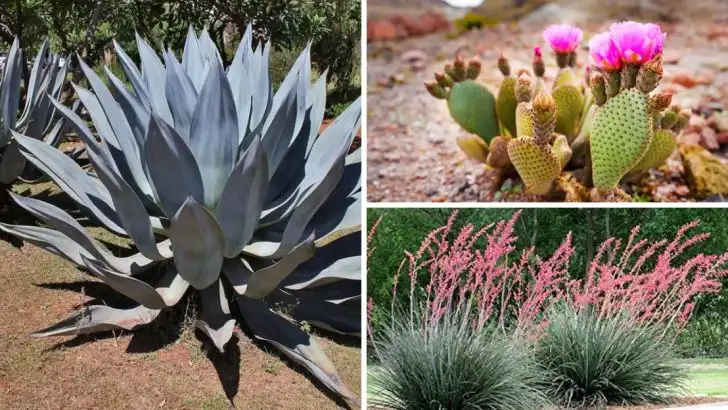Creating an American Southwest garden means embracing the unique beauty of the desert landscape. With its dry climate and dramatic scenery, the Southwest offers a wide variety of plants that thrive in the sun and heat, bringing a distinct character to your outdoor space. If you’ve ever been drawn to the vibrant colors and textures found in this region, incorporating the right plants can help capture that authentic Southwest feel.
In this guide, we’ll introduce you to 21 must-have plants that are perfect for creating a Southwest-inspired garden. From hardy succulents to colorful wildflowers, these plants not only thrive in arid conditions but also add depth and charm to your garden. With the right selection, you can bring the spirit of the American Southwest into your own backyard, no matter where you live.
Agave Americana
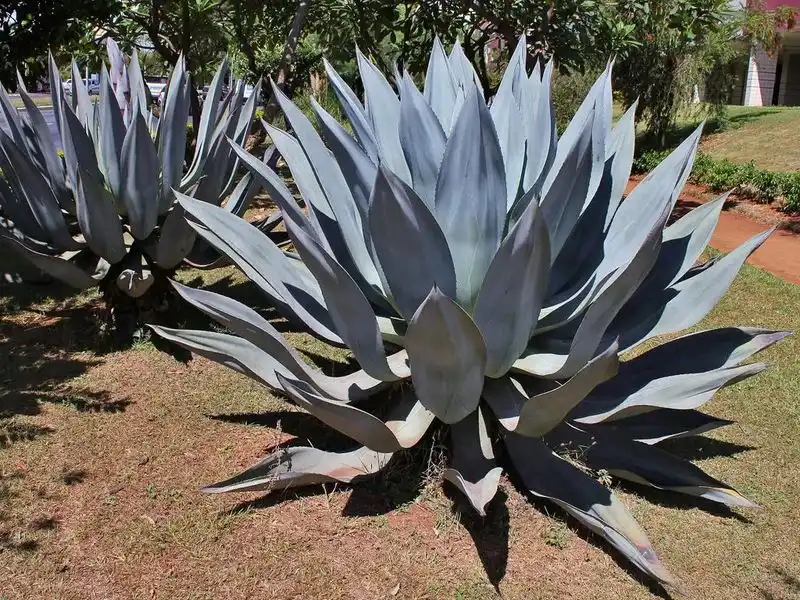
Agave Americana, often known as the century plant, is a striking architectural marvel in any garden. Its blue-green, spiky leaves form a rosette pattern that can grow up to six feet wide.
Blessed with resilience, this agave thrives in arid conditions, requiring minimal water once established. Every decade or so, it surprises with a towering flower stalk, a testament to its grandeur.
Plant it in well-drained soil and enjoy its majestic presence. Fun fact: despite its common name, it usually blooms once every 10-30 years, leaving behind offsets to continue its legacy.
Prickly Pear Cactus
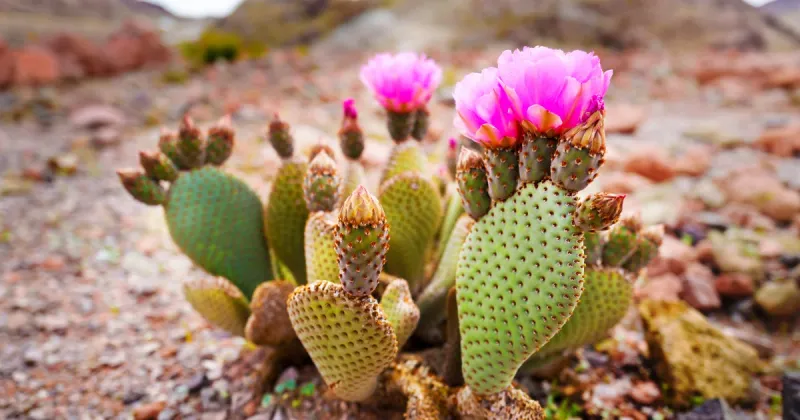
The prickly pear cactus is a classic choice for Southwest gardens, admired for its paddle-shaped pads and vibrant seasonal blooms. These cacti are not only visually appealing but also incredibly hardy, tolerating extreme heat and drought with ease.
In spring, they dazzle with flowers in shades of yellow, red, or purple, followed by edible fruits. Their adaptability makes them perfect for inexperienced gardeners.
Did you know? Prickly pear pads, or “nopales,” are a staple in Mexican cuisine, used in salads and tacos for a unique tangy flavor.
Desert Marigold
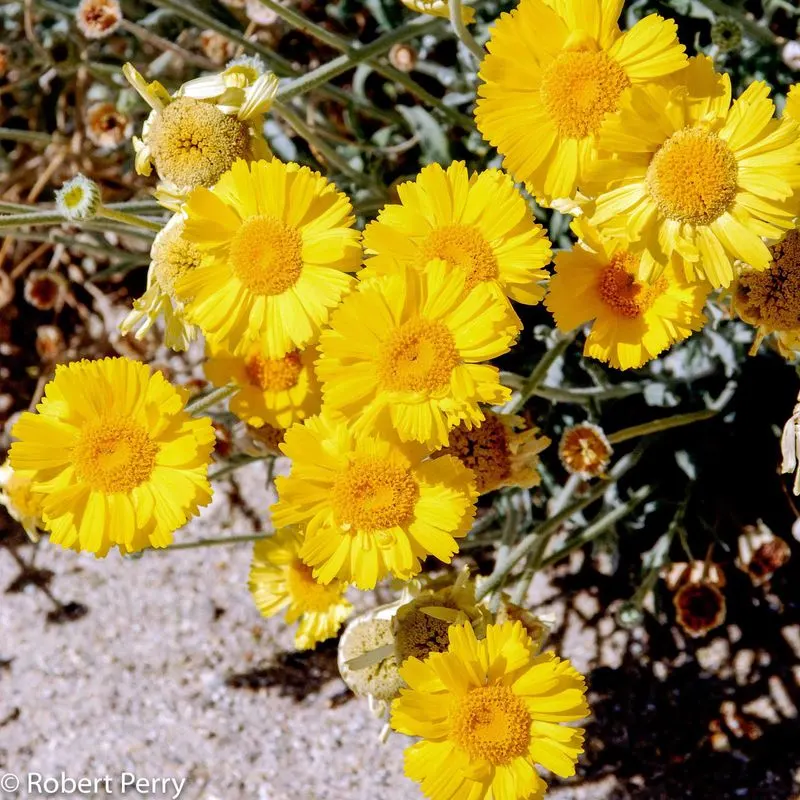
Desert marigolds are cheerful perennials that bring brightness to any arid garden with their sunny, daisy-like blooms. Flourishing in poor, dry soils, they require little water and bloom profusely from spring through fall.
Their vibrant yellow flowers attract pollinators, adding life to your garden. Beyond beauty, these plants are low-maintenance, perfect for busy gardeners.
Fun fact: desert marigolds have been used in traditional medicine, believed to have healing properties. Plant them in sunny spots and watch them thrive with minimal care.
Red Yucca
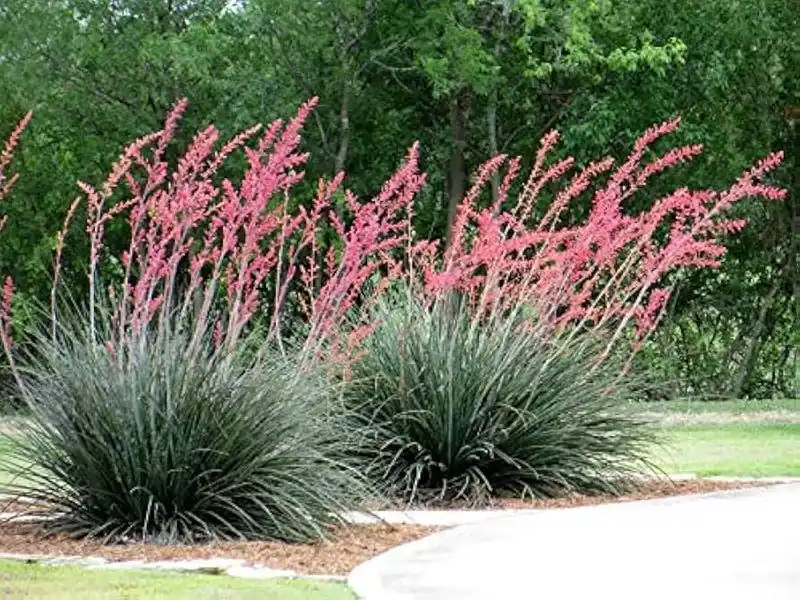
Red yucca is a versatile and eye-catching perennial, known for its graceful arching leaves and vibrant coral-red flower spikes. A favorite among hummingbirds, its blooms last from late spring to early fall.
It’s resilient, drought-tolerant, and thrives in various soil types. Plant red yucca in a sunny location and enjoy its long-lasting beauty.
Its evergreen nature provides visual interest even in winter months. Did you know?
Despite its name, red yucca isn’t a true yucca but belongs to the lily family. It’s a delightful addition to any Southwestern garden.
Apache Plume
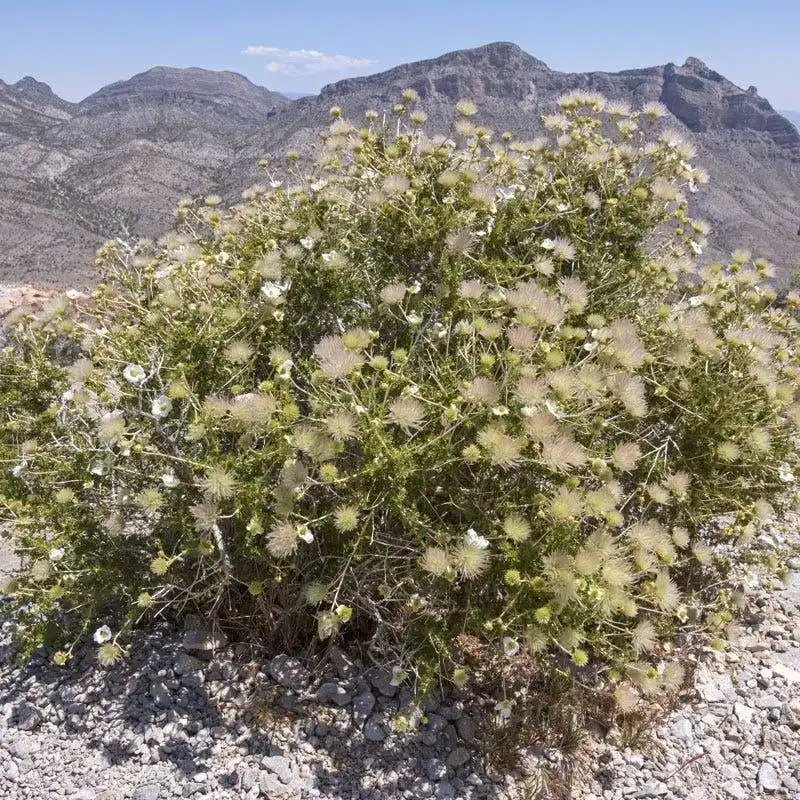
Apache plume is a charming shrub, celebrated for its delicate white flowers and feathery pink seed heads that resemble wispy plumes. This hardy plant thrives in rocky soils and requires minimal water, making it ideal for low-maintenance gardens.
Its blooms attract butterflies, while its unique seed heads add year-round interest. A great choice for erosion control on slopes.
Interesting tidbit: its name comes from the Apache tribe, who valued its ornamental and practical uses. Plant it in full sun and enjoy its enduring allure.
Penstemon

Penstemons, often called beardtongues, are vibrant wildflowers that bring a splash of color to Southwest gardens. Known for their tubular blooms in shades of pink, purple, red, and white, they attract hummingbirds and bees.
These perennials are drought-tolerant and thrive in sandy, well-drained soils. Plant them in sunny spots for the best performance.
A quirky fact: the name “penstemon” comes from the Greek ‘penta,’ meaning five, and ‘stemon,’ meaning stamen, referencing their unique floral structure. They’re a delightful choice for both novice and seasoned gardeners.
Yucca Filamentosa
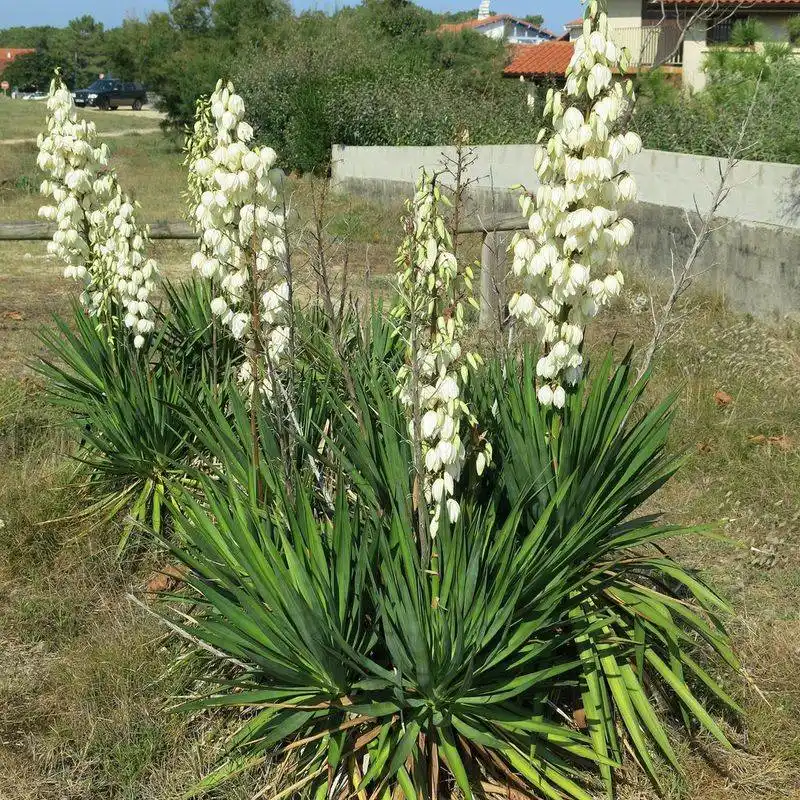
Yucca filamentosa, commonly known as Adam’s needle, is a robust perennial characterized by its sharp, sword-like leaves and tall, dramatic flower spikes. Perfect for adding vertical interest, it requires little maintenance and thrives in well-drained soil under full sun.
During summer, it produces stunning white flowers that attract pollinators. Its resilience to drought and heat makes it a staple in Southwest gardens.
Fun tidbit: its fibrous leaves were traditionally used by Native Americans for making twine and baskets. A striking and practical addition to any garden.
Ocotillo
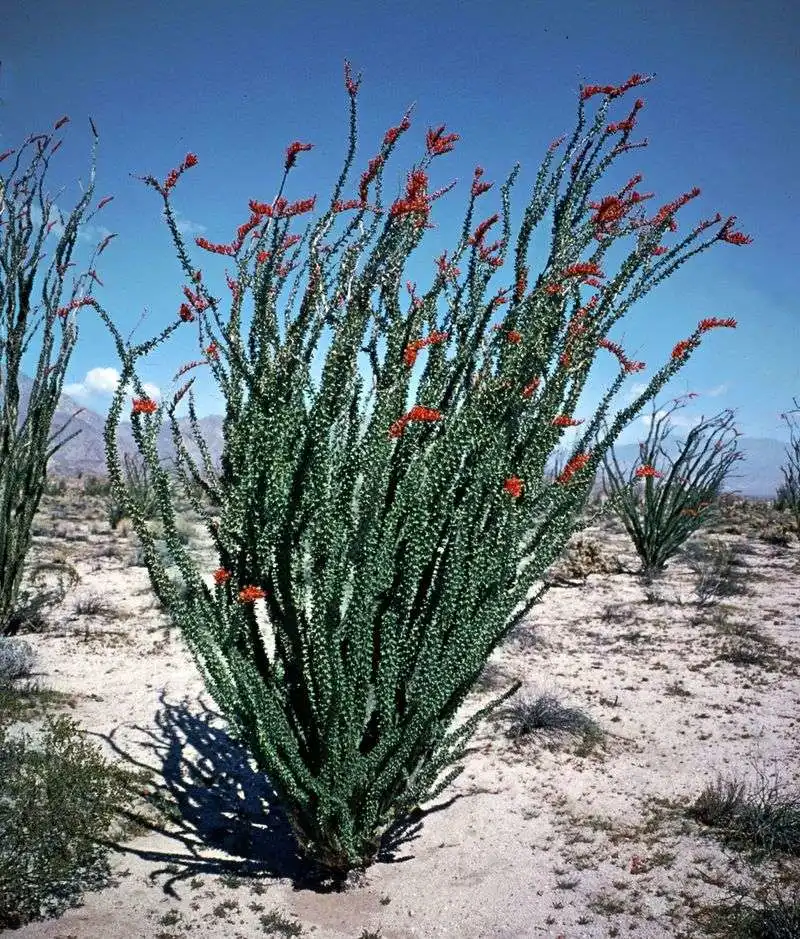
The ocotillo is a fascinating plant, known for its tall, spiny canes and brilliant red flowers that bloom after rain. Despite its thorny appearance, it’s a gentle giant, adding architectural flair to gardens.
This drought-tolerant plant thrives in well-drained, sandy soils. Its seasonal blooms provide a vivid contrast against its grayish-green stems.
Did you know? The ocotillo is not a true cactus but is often mistaken for one.
Plant it in a sunny spot and watch this desert native dance with the wind, bringing elegance to your landscape.
Sotol
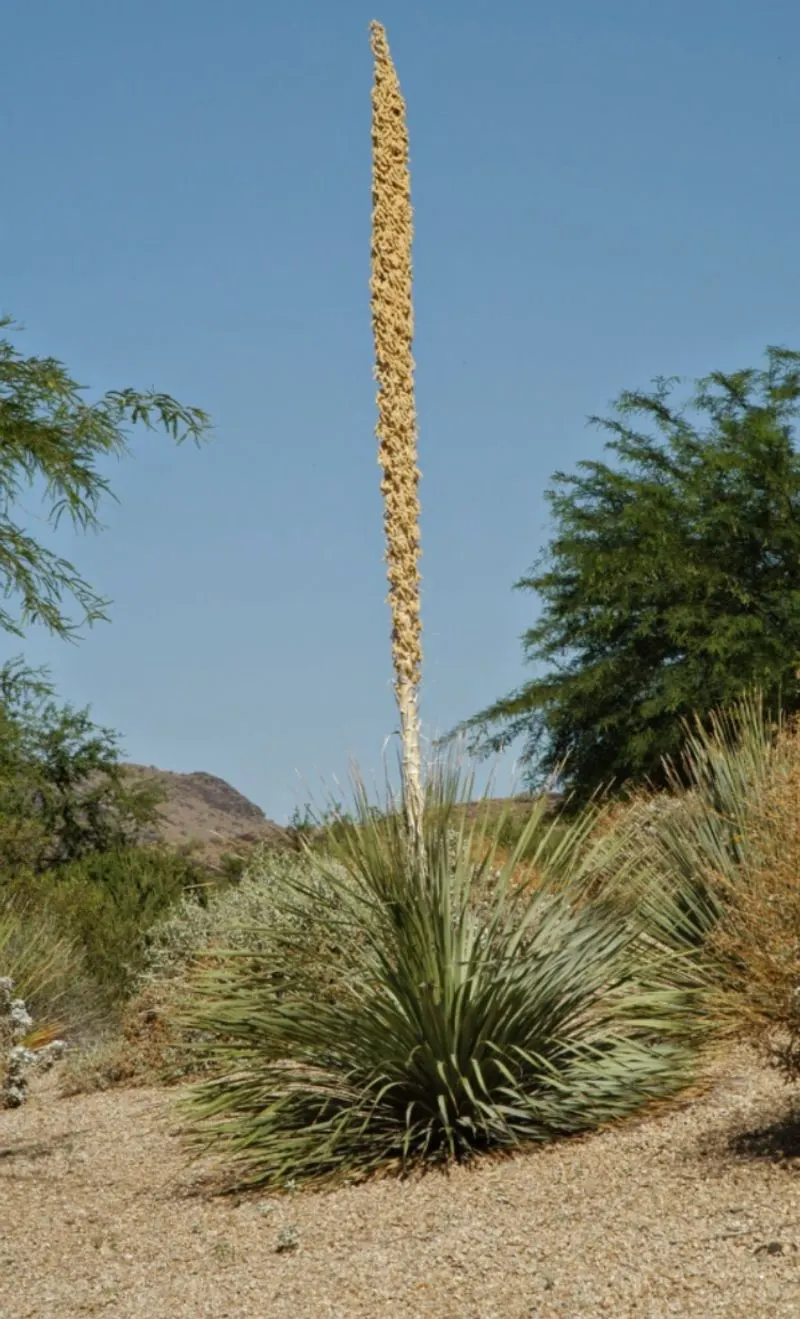
Sotol, also called desert spoon, is a striking plant with long, slender leaves radiating from a central base, crowned by a towering flower spike. This hardy perennial thrives in rocky, well-drained soils and requires minimal watering.
Its structural beauty makes it a focal point in any Southwest garden. Fun fact: sotol is used to produce a traditional distilled spirit in northern Mexico, similar to tequila.
Plant it in full sun to fully appreciate its grace and resilience. Its unique form and cultural significance make it a garden standout.
Engelmann’s Hedgehog Cactus

Engelmann’s hedgehog cactus is a petite wonder, forming clusters of cylindrical stems adorned with spines and striking pink blooms. This cactus thrives in rocky, arid settings, requiring very little water.
Its vibrant flowers bloom in spring, attracting pollinators and adding color to the landscape. A remarkable feature is its ability to survive extreme drought conditions.
Interesting tidbit: it’s named after George Engelmann, a botanist who studied North American flora. Plant this cactus in sunny, well-drained areas for a tough yet beautiful garden addition.
Desert Willow

Desert willow is a deciduous tree, beloved for its fragrant, trumpet-shaped flowers in hues of pink, purple, and white. Perfect for adding shade, it thrives in dry, sandy soils and requires minimal water.
From spring through fall, it graces gardens with its long-lasting blooms. Despite its name, it’s not a true willow but shares similar leaf shapes.
Interesting note: its wood was traditionally used by Native Americans for crafting bows. Plant it in a sunny location and enjoy its beauty and functionality in a Southwest setting.
Brittlebush

Brittlebush is a hardy perennial, known for its silvery leaves and bright yellow flowers that resemble daisies. This plant thrives in arid conditions, requiring minimal water and care.
Its blooms attract pollinators, adding life to any garden. Beyond its beauty, brittlebush has been used in traditional medicine and as a natural resin.
Fun fact: its aromatic resin was used by Native Americans as incense and glue. Plant it in sunny areas for a splash of color and a touch of history in your Southwest garden.
Parry’s Agave
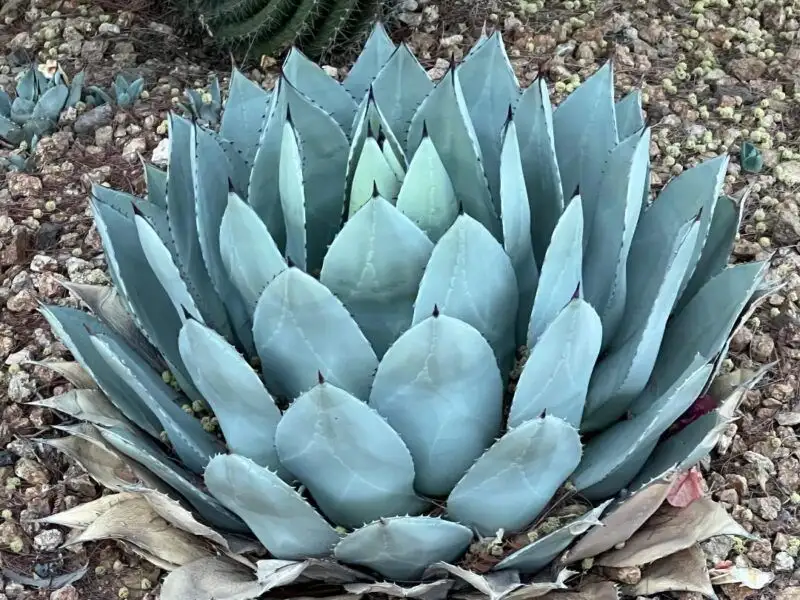
Parry’s agave is a compact, rosette-forming succulent, admired for its blue-green leaves edged with sharp spines. This plant is highly drought-tolerant, making it a perfect fit for arid gardens.
Its symmetrical form adds visual interest and structure. Once in its lifetime, it sends up a tall flower spike, a spectacle to behold.
Did you know? This agave was named after Charles Parry, a 19th-century botanist who explored the American West.
Plant it in well-drained soil under full sun and enjoy its enduring elegance and low-maintenance nature.
Globemallow
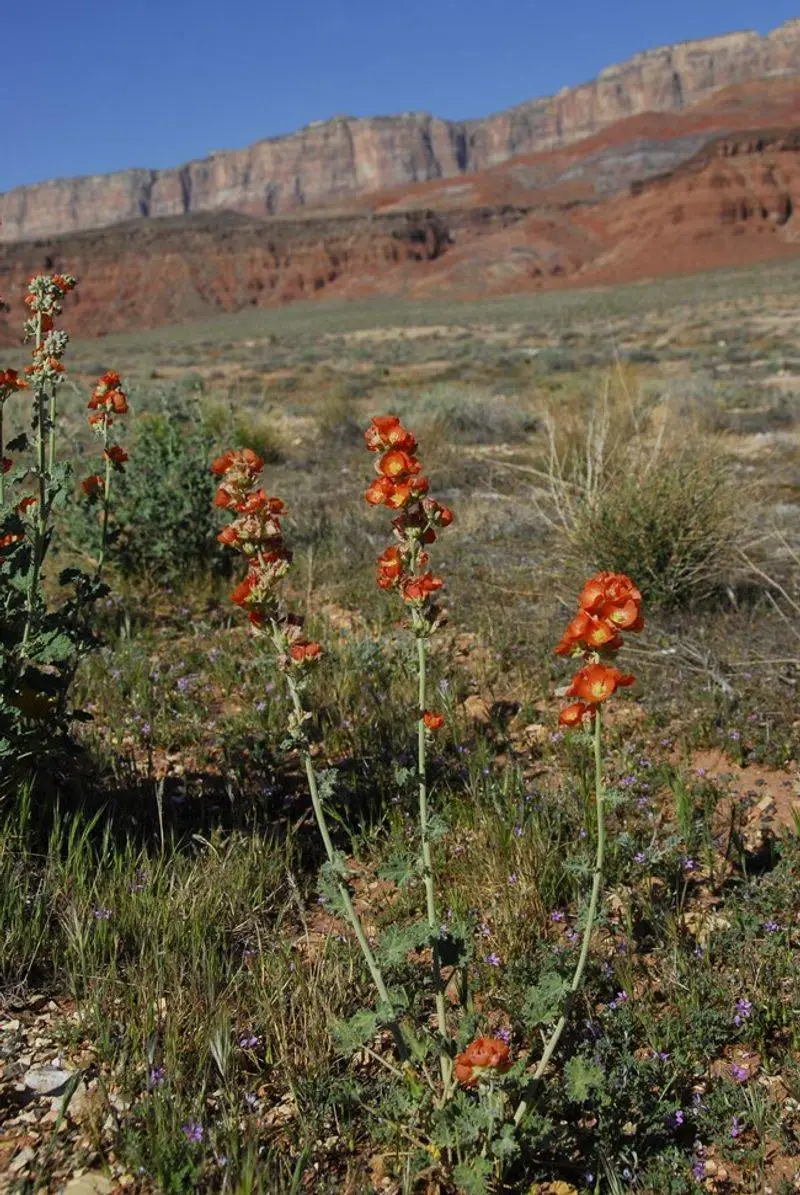
Globemallow is a charming perennial, celebrated for its brilliant orange flowers and fuzzy, gray-green leaves. This drought-tolerant plant thrives in sandy, well-drained soils, making it ideal for Southwest gardens.
Its blooms attract pollinators, and its foliage provides a soft texture to the landscape. An interesting fact: globemallow has been used in traditional medicine for its soothing properties.
Plant it in sunny spots to enjoy its vibrant flowers and easy-care nature. It’s a delightful choice for adding color and texture to your garden.
Creosote Bush

The creosote bush is an iconic desert plant, known for its small yellow flowers and resinous, waxy green leaves. This hardy shrub thrives in extreme conditions, requiring virtually no water once established.
Its scent is synonymous with desert rain, a nostalgic aroma for many. Beyond its resilience, the creosote bush has antiseptic properties and has been used in traditional medicine.
Did you know? It’s one of the oldest living plants, with some clones estimated to be over 11,000 years old.
A fascinating and practical addition to any garden.
Blackfoot Daisy
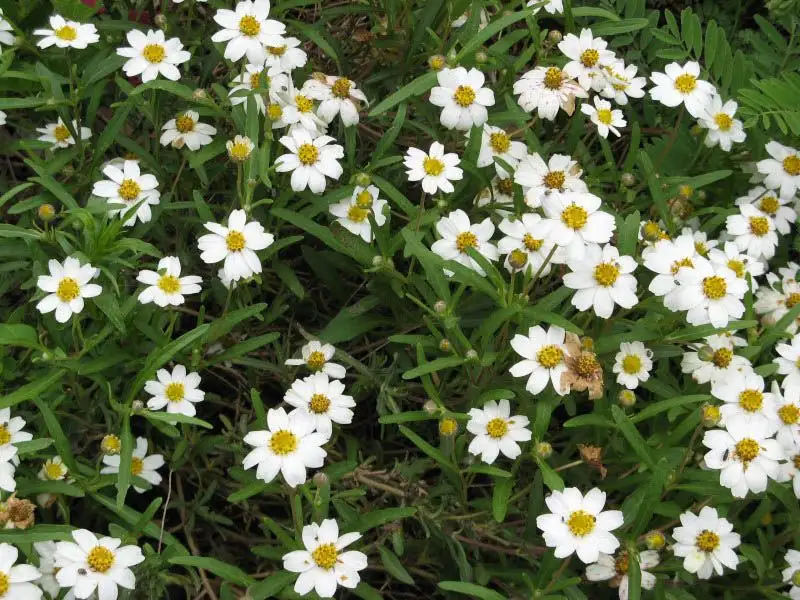
Blackfoot daisy is a low-growing perennial, prized for its delicate, white daisy-like flowers with yellow centers. This plant blooms profusely from spring through fall, adding gentle beauty to any garden.
It’s incredibly drought-tolerant, thriving in rocky, well-drained soils. Its sweet fragrance attracts pollinators, making it a lively addition to the landscape.
Fun fact: it’s named after the Blackfoot Native American tribe. Plant it in sunny areas and enjoy its resilient charm and captivating floral display.
A perfect choice for low-maintenance gardening.
Fairy Duster
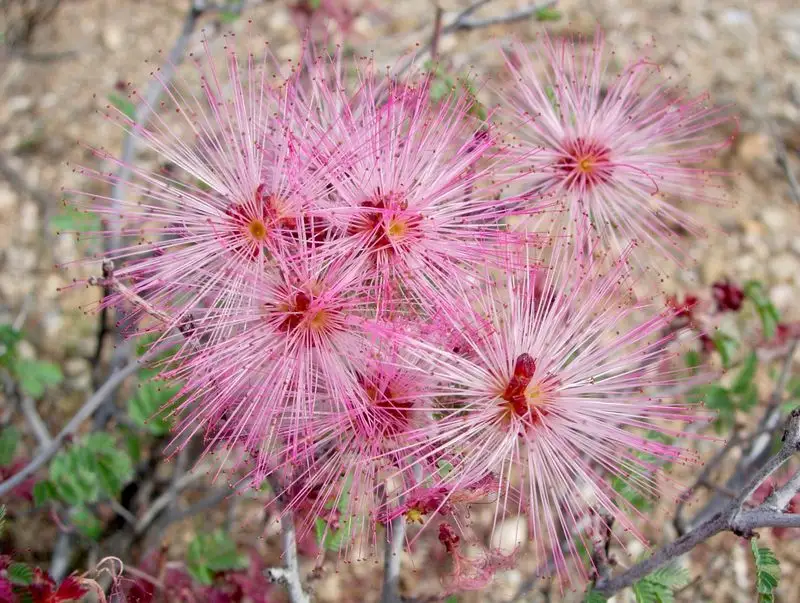
Fairy duster is a whimsical shrub, known for its delicate, pink, fluffy flowers resembling duster brushes. This plant thrives in dry, rocky soils and requires minimal water, making it ideal for arid gardens.
Its blooms attract hummingbirds and butterflies, bringing life and movement to your garden. Did you know?
The fairy duster is native to the southwestern United States and northern Mexico. Plant it in sunny spots to enjoy its fairy-like charm and easy maintenance.
Its unique flowers and foliage add a touch of magic to any landscape.
Mexican Feather Grass
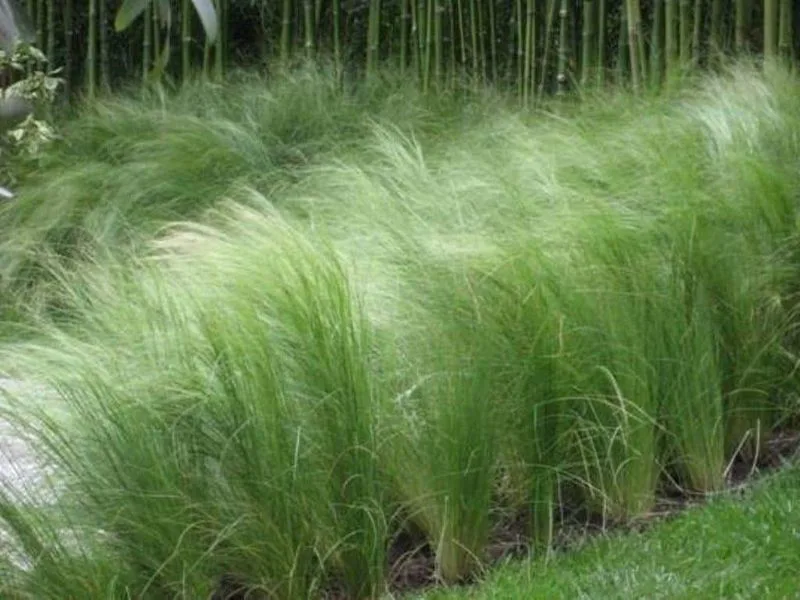
Mexican feather grass is a graceful ornamental grass, celebrated for its wispy, flowing blades that sway with the slightest breeze. This drought-tolerant grass adds texture and movement to gardens, thriving in well-drained soils.
It’s perfect for softening hard landscapes and adding a natural, airy feel. Easy to care for, it requires minimal maintenance once established.
Interesting tidbit: it’s native to the southwestern U. S.
and Mexico. Plant it in full sun for the best effect, and enjoy its gentle sway and soft texture in your garden.
Four O’Clock

Four O’Clock is a captivating perennial, named for its unique trait of blooming in the late afternoon. Its vibrant magenta flowers open as the sun sets, creating a stunning evening spectacle.
This plant thrives in well-drained, sandy soils and is remarkably drought-tolerant. Its fragrant blooms attract nocturnal pollinators, adding a new dimension to your garden’s ecosystem.
Fun fact: the plant’s seeds are used in traditional medicine. Plant it in sunny spots and enjoy its evening charm and minimal care requirements.
A delightful choice for enhancing garden ambiance.
Chuparosa

Chuparosa, also known as hummingbird bush, is a vibrant shrub famed for its tubular red flowers that attract hummingbirds. This hardy plant thrives in arid conditions, requiring minimal water once established.
Its succulent leaves add texture, while its blooms provide a burst of color from winter into spring. An interesting tidbit: “chuparosa” means “hummingbird” in Spanish, reflecting its popularity among these birds.
Plant it in sunny locations to enjoy its vivid flowers and the lively visitors they attract. An excellent choice for a dynamic Southwest garden.
Ghost Plant

Ghost plant, a type of succulent, is known for its intriguing rosettes of pale, bluish-gray leaves that appear almost ethereal. This plant thrives in well-drained soil and requires minimal water, making it perfect for arid gardens.
Its unique coloration adds a cool, calming element to any landscape. Fun fact: the ghost plant is often used in rock gardens and as a low-maintenance houseplant.
Plant it in sunny areas to enjoy its spectral beauty and ease of care. It’s an enchanting choice for adding subtle color and texture to your garden.

